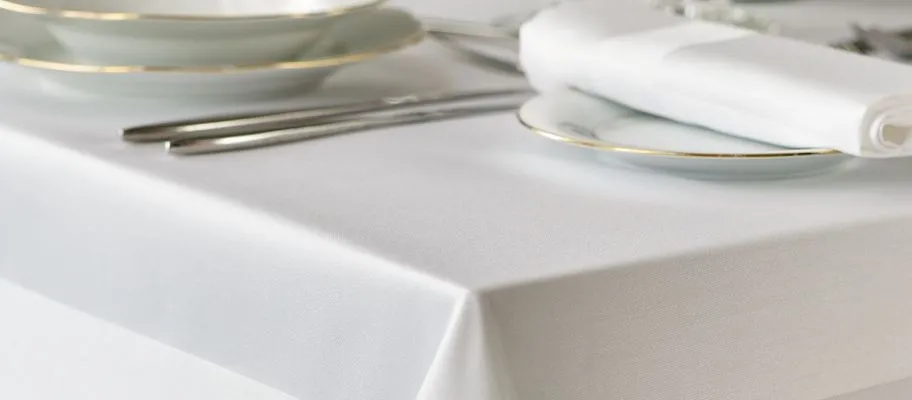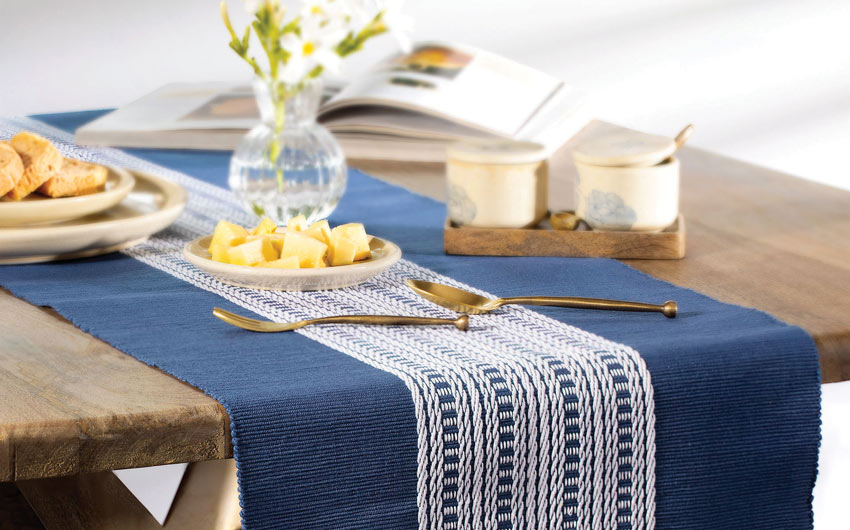Do It Yourself Table Runner Projects: Custom Styles for Your Home
Wiki Article
Bed Linen Fabric Advancements: Discovering Modern Trends and Creative Applications in Style and Textile Sector
From sustainable manufacturing techniques to innovative weaving innovations, the evolution of bed linen is reshaping the landscape of the fabric industry. As we dig into the realms of imaginative design applications and the development of bed linen blends and hybrid materials, a brand-new phase unfolds in which linen's role in future fabric innovations takes facility phase.Lasting Practices in Linen Production
Lasting methods in bed linen manufacturing have ended up being significantly critical in the textile sector's initiatives to reduce ecological influence and promote honest sourcing techniques. Bed linen, a natural fiber stemmed from the flax plant, offers a series of benefits such as toughness, breathability, and biodegradability. Nonetheless, standard techniques of linen production can involve significant water usage, chemical use, and energy-intensive processes.To deal with these difficulties, several fabric producers are adopting lasting practices throughout the bed linen manufacturing process. This consists of sourcing flax from organic ranches that prevent damaging chemicals and chemicals, implementing water-efficient retting techniques to extract fibers from the flax stalks, and utilizing environmentally friendly dyes and finishes. In addition, some companies are purchasing renewable resource resources to power their manufacturing centers and decreasing waste with recycling and upcycling efforts.
Technical Advancements in Linen Weaving
With the expanding focus on sustainable methods in linen manufacturing, the fabric sector is currently witnessing a surge in technical developments specifically intended at changing the art of bed linen weaving. These advancements are improving the means bed linen textiles are generated, providing increased performance, quality, and creative thinking in weaving techniques.One of the essential technological innovations in linen weaving is the assimilation of digital looms. These innovative looms are equipped with software program that permits for detailed and complex styles to be woven with precision. By digitizing the weaving process, producers can achieve greater uniformity and precision in their linen textiles.
Moreover, innovations in thread spinning modern technology have allowed the manufacturing of finer and more durable linen threads - table cloths. This causes softer and smoother bed linen materials that retain their high quality also after multiple uses and washes
In addition, the development of environmentally friendly dyeing processes and surfaces for bed linen materials is obtaining traction. These sustainable techniques not only reduce the environmental influence yet likewise provide to the raising customer need for ethically created fabrics.
Creative Layout Applications for Bed Linen
Innovative creative methods are increasingly forming the creative layout applications for bed linen in the fabric industry. Bed linen's all-natural aesthetic allure and ability to blend with other fabrics make it a favorite choice for producing distinct garments and accessories that provide to the eco aware consumer.In addition, designers are explore bed linen in home style, using its breathable and sturdy nature to craft stylish furnishings such as drapes, bed linen, and upholstery. The texture and drape of bed linen bring a sense of refinement and comfort to indoor spaces, including a touch of beauty to modern-day homes.

Bed Linen Blends and Crossbreed Fabrics

Hybrid fabrics, on the other hand, take the idea of mixing an action further by incorporating extra elements such as metal strings, recycled products, or conductive fibers. These cutting-edge fabrics not only increase the style opportunities yet additionally introduce useful aspects like conductivity, antimicrobial buildings, or improved durability. Hybrid materials are significantly being made use of in different sectors, including fashion, interior decoration, and technological textiles, where the demand for multifunctional products is on the increase.
Linen's Function in Future Textile Innovations

In the realm of future fabric technologies, bed linen is expected to be a principal in the growth of sophisticated useful textiles. Designers and researchers are checking out methods to improve bed linen's intrinsic qualities via technological advancements, such as including smart textiles, nanotechnology, and performance surfaces. These innovations aim to elevate bed linen's performance features, making it ideal for a broader variety of applications, from activewear to safety apparel.
Additionally, the mix of bed linen with various other all-natural or artificial fibers opens flat sheet up limitless possibilities for creating novel textiles with distinct buildings and performances. By leveraging bed linen's qualities and exploring innovative blends, the textile sector is positioned to introduce interesting advancements that accommodate advancing customer needs and sustainability requirements.
Final Thought
Finally, the expedition of sustainable methods, technological improvements, creative design applications, linen blends, and its duty in future fabric technologies highlight the constant development of linen material in the modern-day design and fabric industry. With a focus on development and creativity, the convenience and environment-friendly nature of linen make it an important material for suppliers and developers alike, leading the means for additional growths and improvements in the field of textiles.As we dig right into the worlds of innovative layout applications and the emergence of bed linen blends and hybrid fabrics, a brand-new chapter unfolds in which bed linen's role in future fabric advancements takes facility stage.
Discovering the fusion of bed linen with other fabrics has led to the emergence of innovative blends and hybrid fabrics in the modern fabric industry. Linen blends provide an unique combination of the qualities of bed linen with those of other fibers, resulting in fabrics that possess enhanced residential properties such as enhanced longevity, enhanced draping, and minimized wrinkling.The development of linen blends and hybrid materials has actually established the phase for Bed linen to play an essential duty in driving future fabric developments.In the realm of future textile technologies, linen is anticipated to be a crucial player in the growth of sophisticated practical textiles.
Report this wiki page